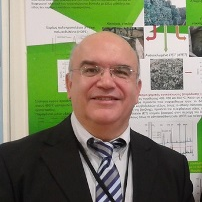Kinetics of Polymerization Reactions
A special issue of Polymers (ISSN 2073-4360). This special issue belongs to the section "Polymer Physics and Theory".
Deadline for manuscript submissions: closed (31 December 2019) | Viewed by 27441
Special Issue Editor
Interests: polymerization kinetics; thermal degradation kinetics; modeling of radical and step polymerization reactions; polymer nanocomposites; calorimetry; polymer recycling
Special Issues, Collections and Topics in MDPI journals
Special Issue Information
Dear Colleagues,
Kinetics of polymerization reactions have been studied extensively for several years. However, modern challenges in the synthesis of novel polymer-based materials, such as polymer nanocomposites or multifunctional polymers, have redefined the need for a thorough theoretical or experimental study of the polymerization kinetics.
This Special Issue is planned to bring together a number of original papers and reviews covering (but not restricted to) the following topics:
- Modeling of radical or step polymerization reactions;
- Development of advanced experimental techniques for measuring the kinetics of polymerization;
- Controlled/living radical polymerization:
- Kinetics of reversible addition–fragmentation transfer (RAFT) polymerization;
- Kinetics of atom transfer radical polymerization (ATRP);
- Solid-state polycondensation kinetics;
- Photo-polymerization kinetics;
- Effect of diffusion-controlled phenomena on the kinetics of polymerization reactions;
- Kinetics of co- or multicomponent polymerizations;
- Nonisothermal polymerization kinetics;
- Kinetics of crosslinking polymerization;
- Effect of nanoparticles on the polymerization kinetics of conventional monomers;
- Polymerization kinetics of gel-forming materials.
Prof. Dr. Dimitris S. Achilias
Guest Editor
Manuscript Submission Information
Manuscripts should be submitted online at www.mdpi.com by registering and logging in to this website. Once you are registered, click here to go to the submission form. Manuscripts can be submitted until the deadline. All submissions that pass pre-check are peer-reviewed. Accepted papers will be published continuously in the journal (as soon as accepted) and will be listed together on the special issue website. Research articles, review articles as well as short communications are invited. For planned papers, a title and short abstract (about 100 words) can be sent to the Editorial Office for announcement on this website.
Submitted manuscripts should not have been published previously, nor be under consideration for publication elsewhere (except conference proceedings papers). All manuscripts are thoroughly refereed through a single-blind peer-review process. A guide for authors and other relevant information for submission of manuscripts is available on the Instructions for Authors page. Polymers is an international peer-reviewed open access semimonthly journal published by MDPI.
Please visit the Instructions for Authors page before submitting a manuscript. The Article Processing Charge (APC) for publication in this open access journal is 2700 CHF (Swiss Francs). Submitted papers should be well formatted and use good English. Authors may use MDPI's English editing service prior to publication or during author revisions.
Keywords
- Polymerization kinetics
- Radical polymerization
- Polycondensation
- Modeling polymerization
- Diffusion-controlled phenomena






